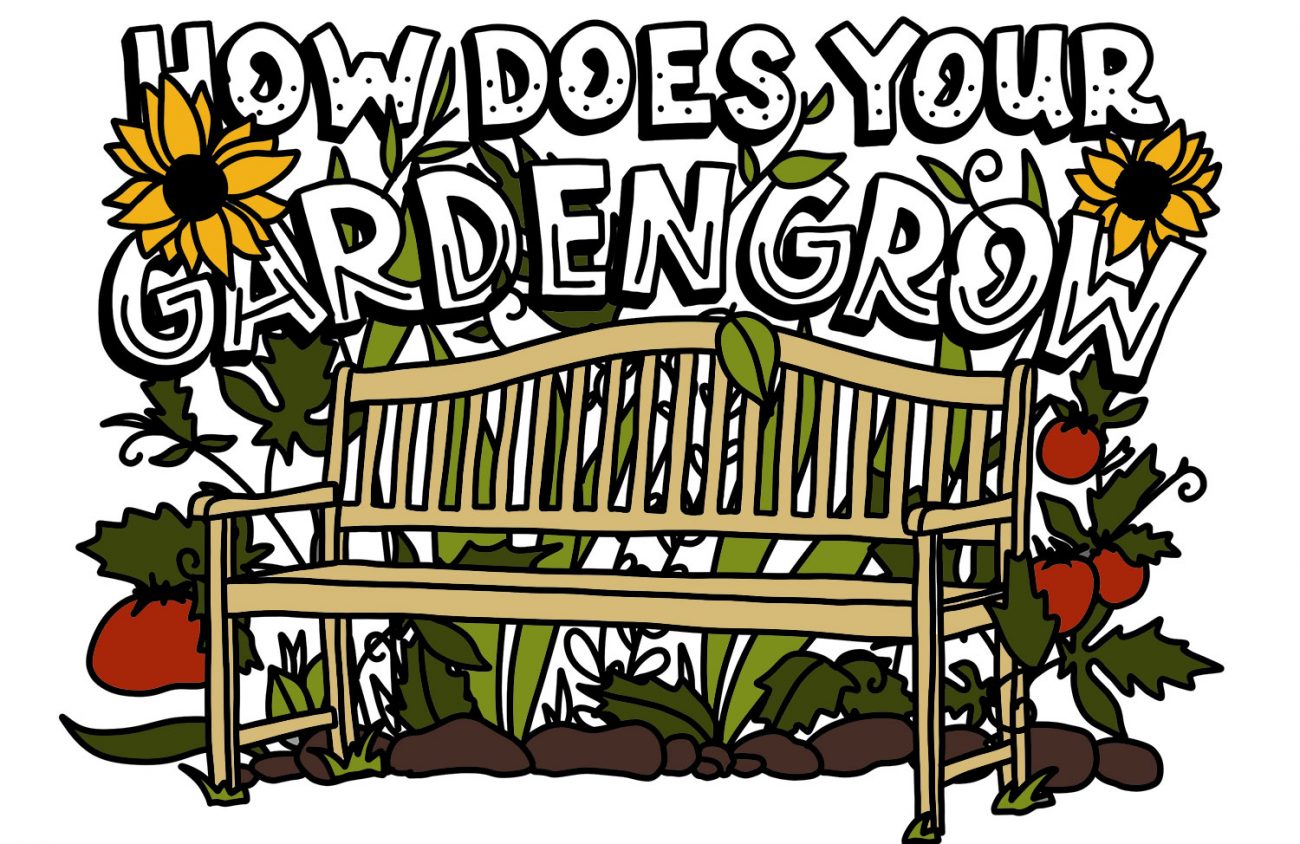My husband points out that while I have rarely — if ever — designed a garden without a bench in it, I almost never sit on one.
He’s right. Gardens are certainly nice to relax in, but the primary function of a garden, as far as I am concerned, is to provide opportunities for meaningful work.
Never have I been more grateful for my garden than in the past few weeks, because when I am gardening, that’s all I think about. My gardening friends all agree. It’s a convenient, healthy and productive form of escape.
There is also a social aspect to working in my yard that is especially welcome right now. Our house and garden sit on a very public corner, unfenced and unhedged, bounded by two streets, an alley and our neighbor’s yard.
Obviously, I am used to seeing people walk by. Some I know, some I don’t; some say hello, other respect my privacy, or rather my lack of it. This spring, however, there has been a large uptick in the number of walkers, many of them in family groups and many of them unfamiliar. More often than usual, people pause to ask questions or say nice things about the garden. It’s led to some good conversations.
But back to work. Anyone lucky enough to have a food garden — or the space to make a new one — has plenty to do this time of year. This is prime time for planting a summer food garden, and with extra time on my hands I’ve been planting kale and lettuce starts and sowing arugula every week for a month. Starts planted mid-April will be big enough to harvest by mid-May, when I need the space for tomatoes, eggplant and beans. I’ll continue sowing greens through the summer, between the other crops. Salad greens appreciate a little shade.
I’m planting more salad greens than usual because I like them very fresh, and I want to limit my visits to the store: no more daily shopping for me in virus time. Most years, I try to grow at least one thing I haven’t tried before, but this year I’m sticking with things I know I’ll use.
One of my experiments from a couple of years ago has become a fixture. That’s celery, which I harvest a couple of stalks at a time over many months and sometimes into winter. If I had more space I might grow winter squash and plant a late potato crop (organic potatoes from the grocery store will do fine for starts) because both are staples with a long shelf life.
I’ve heard that there are seed shortages. Most gardeners buy more seeds than they really need, even in an ordinary year. I’m no exception, but that’s partly because most seed packets, even small ones, contain more seed than I need. If you are having trouble finding seed, dig out those partly used packets from the last year or two. Most good quality seeds stay viable for several years. Just plant two or three times as many seeds as recommended, and be prepared to thin. That’s what I plan to do this year for zucchini and green beans.
I’m keenly aware that the coronavirus doesn’t mean extra time for everyone, and that there are so many people for whom it will bring only privation, anxiety and grief. I’m grateful to be one of the lucky ones, with extra time on my hands and a compelling, safe way to keep busy. I’m also grateful that there are nurseries, garden centers and landscape products businesses in operation. This year I may finally edge my gravel paths with river boulders. Maybe this year I’ll find time to thin the fruit on my apple trees. And with summer trips canceled, I won’t be missing crucial weeks of harvesting.
Working in the garden does not, of course, mean working every minute. There’s a multitude of happy distractions. I may pause to count the different pollinators visiting the lavender and catmint, watch hummingbirds squabble over the flowers on the horse chestnut tree, or just stand by the shed and watch the frenetic coming and going of the orchard mason bees. Sometimes I’ll wander at random through the garden, just enjoying the flowers while mentally listing the tasks I should tackle next.
I might even sit on a bench.
